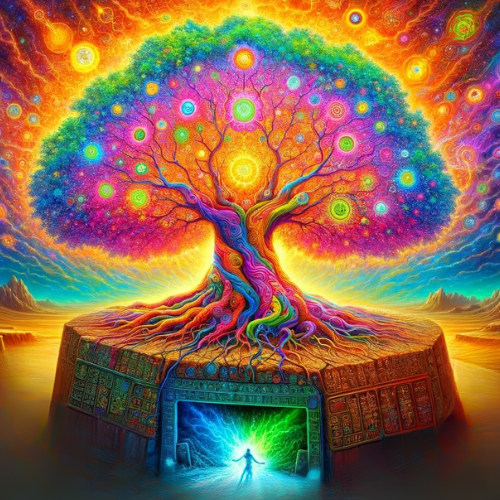by Rev (Dr.) Cynthia Ramirez Lindenmeyer
"I have a new resurrection theology. To me, Easter is no longer the story about Jesus saving humanity by defeating death; it is the metaphysical message to realize our inherent spiritual nature and to live in harmony with one another." --Rev (Dr.) Cynthia Ramirez Lindenmeyer
In the heart of every Easter Sunday lies the profound symbol of resurrection—the empty tomb heralding a new era for humanity.

My own comprehension of resurrection theology dawned upon me during a pivotal moment in my teenage years, amidst the pulsating rhythm of drums and the electrifying strumming of guitars within a repurposed alcohol warehouse turned Calvary Chapel on the outskirts of Denver. The guest speaker, evangelist Lonnie Frisbee, diverged from any preacher I had encountered before, and the music resonated with an energy far removed from the typical somber hymns that usually put me asleep. Resurrection theology came alive for me through the pulsating rhythm of drums, the electrifying strumming of guitars, and the infectious energy of upbeat music. However, it wasn't until I heard the lyrics of a song that the concept of resurrection truly resonated with me—a concept that years of Catholic and Methodist teachings had failed to fully convey:
Like a vapor this life is just waiting to pass
Like the flowers that fade, like the withering grass
But life seems so long and death so complete
And the grave an impossible potion to cheat
But there's One who has been there and still lives to tell
There is One who has been through both heaven and hell
And the grave will come up empty-handed the day
Jesus will come and steal us away
The eloquent song, Grave Robber, by Petra, transformed my delinquent teenage ways into a “Are you saved” Christian disciple. Psychedelics yielded a similarly revolutionary impact, guiding me towards grasping the concept of The Resurrection from a metaphysical perspective.
The beloved story told every Easter Sunday symbolizes spiritual rebirth, awakening, and surpassing earthly perspectives. Resurrection conveys the notion that existence extends beyond mere corporeal existence, affirming the eternity of the soul. Its essence imparts the universal lesson that we possess the capacity to transcend our individual constraints and challenges, rising to a heightened stage of consciousness. And that’s how I feel at the end of an Ayahuasca experience. When the ceremony ends, it marks a new beginning—a return to the mundane world but infused with newfound wisdom and clarity.
The aftermath of an Ayahuasca journey, much like the aftermath of Easter Sunday, is a period of reflection and integration. It is a time to contemplate the lessons learned, share insights with others, and embody the transformation that has taken place. Each journey brings forth a death and rebirth process, where past mistakes and traumas are confronted and transcended, leading to a deeper understanding of oneself and one's connection to the universe.
For many who have experienced Ayahuasca, death is no longer feared as an end but embraced as a natural part of the cycle of existence. Just as the Resurrection of Jesus Christ signifies victory over death, so too does the Ayahuasca experience offer a profound revelation—that death is not the end but a gateway to new beginnings.
The words of Grave Robber have a new meaning for me now, as I have a new resurrection theology. To me, Easter is no longer the story about Jesus saving humanity by defeating death; it is the metaphysical message to realize our inherent spiritual nature and to live in harmony with one another. As I return from each Ayahuasca journey, I carry with me a newfound understanding of resurrection—not as a historical event but as a timeless truth: Resurrection signifies the dissolution of the illusion of separation from the Divine. This is how I aspire to live —to exist in unity with the divine essence.
The three-part exploration of the parallels between Christian narratives and the Ayahuasca journey unveils a profound journey of spiritual transformation. Phase One mirrors The Last Supper, where partakers gather in ceremonial communion, confronting all the emotional voices who participate during the initial stage of the ceremony before surrendering to the transformative experience. Phase Two, comparable to Good Friday, represents the crucifixion of the ego, as participants confront inner demons and release layers of trauma. Finally, Phase Three echoes Easter Sunday, signifying resurrection into rebirth, where the dissolution of the illusion of separation from the Divine brings about a newfound understanding of spiritual unity and harmony. Through these parallels, the article invites readers on an open-minded exploration of how Ayahuasca reveals the timeless truth that resurrection is a continuous process of transcendence towards unity with all.
